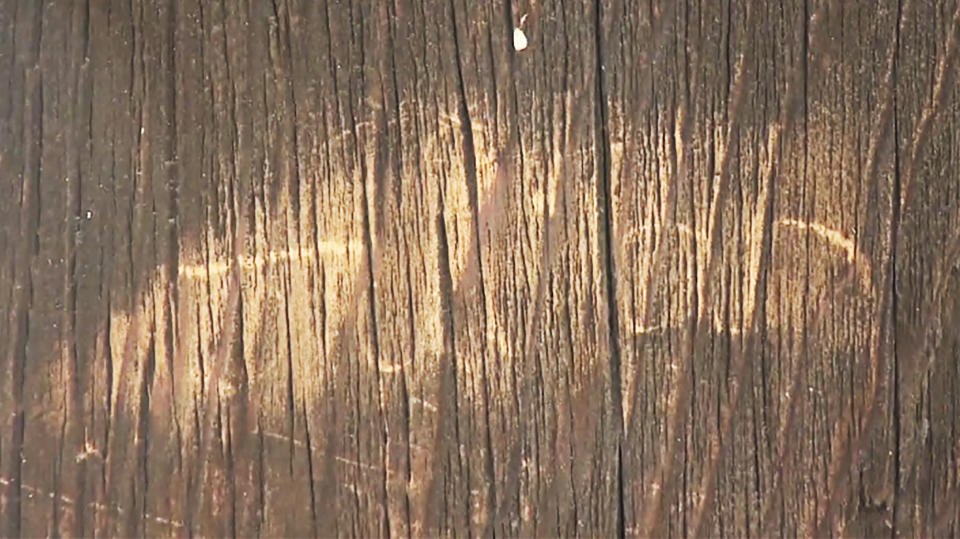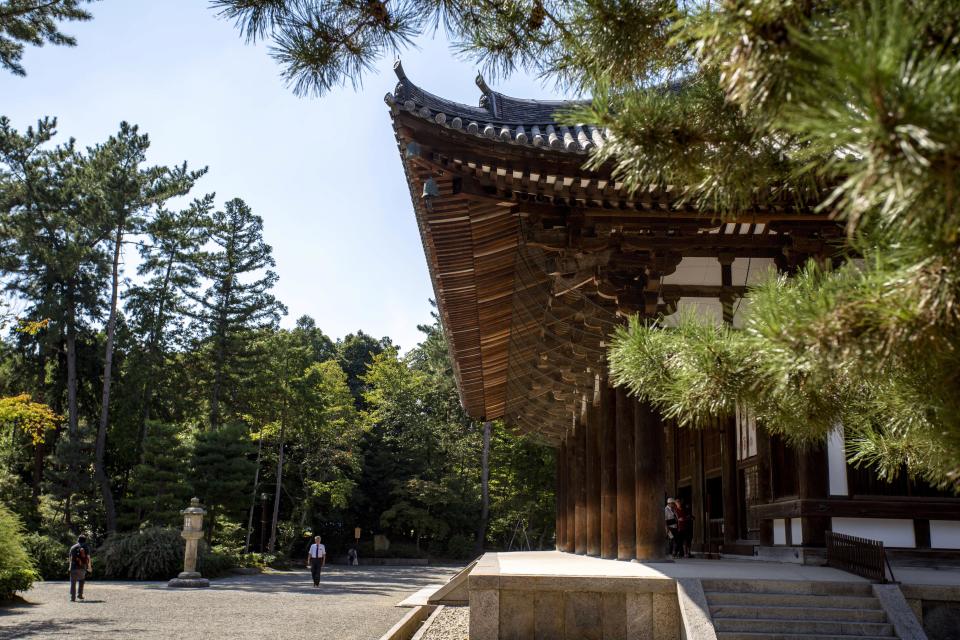Canadian teenager carved name into 8th-century Japanese temple
The pillar in the “Golden Hall” in Japan’s Toshodaji Temple has been in place for centuries. But that didn’t stop one Canadian teenager from carving his name in it, prompting questions about what can be done to stop a rash of vandalism striking the world’s treasures.
The word “Julian” in small letters was inscribed last Friday into the wooden structure built 1,250 years ago at the Buddhist site in the central city of Nara.
A Japanese tourist spotted the 17-year-old scratching his name into the wood with his fingernail and alerted staff who called police, the country’s Kyodo news agency reported.
The teenager, whose name has not been disclosed because he is a minor, was questioned but does not appear to have been charged with a crime. Had he been indicted for damaging “important cultural property,” he could have faced up to five years in prison and a fine up to 1 million yen, around $7,200.
“Such an act is certainly sacrilegious, especially in Japan where cultural norms repudiate such practices,” Ken Tadashi Oshima, a professor of Japanese architectural history at the University of Washington, told NBC News on Friday via email.

Founded as a place for Buddhist worship in 759 by a Chinese monk, Jianzhen, from the Tang dynasty, the temple was the first in Japan to be devoted to a Chinese Buddhist denomination, the Nanzan school, according to the temple’s website.
The Japanese government designated the temple a “national treasure” in 1951 and UNESCO added it to the World Heritage list in 1998, saying that together with Nara’s other historic monuments, including “Buddhist temples, Shinto shrines and the excavated remains of the great Imperial Palace, it provides a vivid picture of life in the Japanese capital in the 8th century, a period of profound political and cultural change.”
Odashi said it could be argued that the temple was equally as significant as the Acropolis in Greece. “It is preserved as a living structure as it is made of wood,” he said. “This makes public awareness of its significance especially important to prevent other such acts from happening again.”
NBC News has reached out for comment from the temple, where staff members were later filmed putting up signs in both Japanese and English near the entrance reading, “Please do not damage the hall,” and "You will be punished for violating the Cultural Property Protection Law.”

The incident in Japan came weeks after a tourist was caught carving a love note into the wall of the Colosseum in Rome, drawing outrage on social media and from Italian officials.
The culprit, identified by his lawyer as Ivan Danailov Dimitrov, 27, later apologized in a letter in which he said he was unaware of the historical significance of the nearly 2,000-year-old amphitheater.
His attorney, Alexandro Maria Tirelli, told NBC News that the defacing was as heinous “but not serious.”
Alice Tseng, a professor of Japanese art and architecture at Boston University, said vandalism of this nature “does occur very often at historic sites and cultural sites” around the world.
“Natural sites such as the sand dunes of Tottori and the bamboo groves of Arashiyama in Kyoto have also suffered vandalism regularly,” she said. “Based on the various languages in which unwelcome graffiti are written or carved, visitors from many different parts of the world are offenders.”
She added that it was difficult to watch over these sites, since hiring security guards or installing cameras is often not “aesthetically appropriate” and can create a “financial burden.”
“Wouldn’t it be more productive to educate visitors about proper conduct?” she said. “Regardless of a site’s age and value, damage of someone else’s property is always wrong. Just don’t do it; don’t even think about it.”
This article was originally published on NBCNews.com

